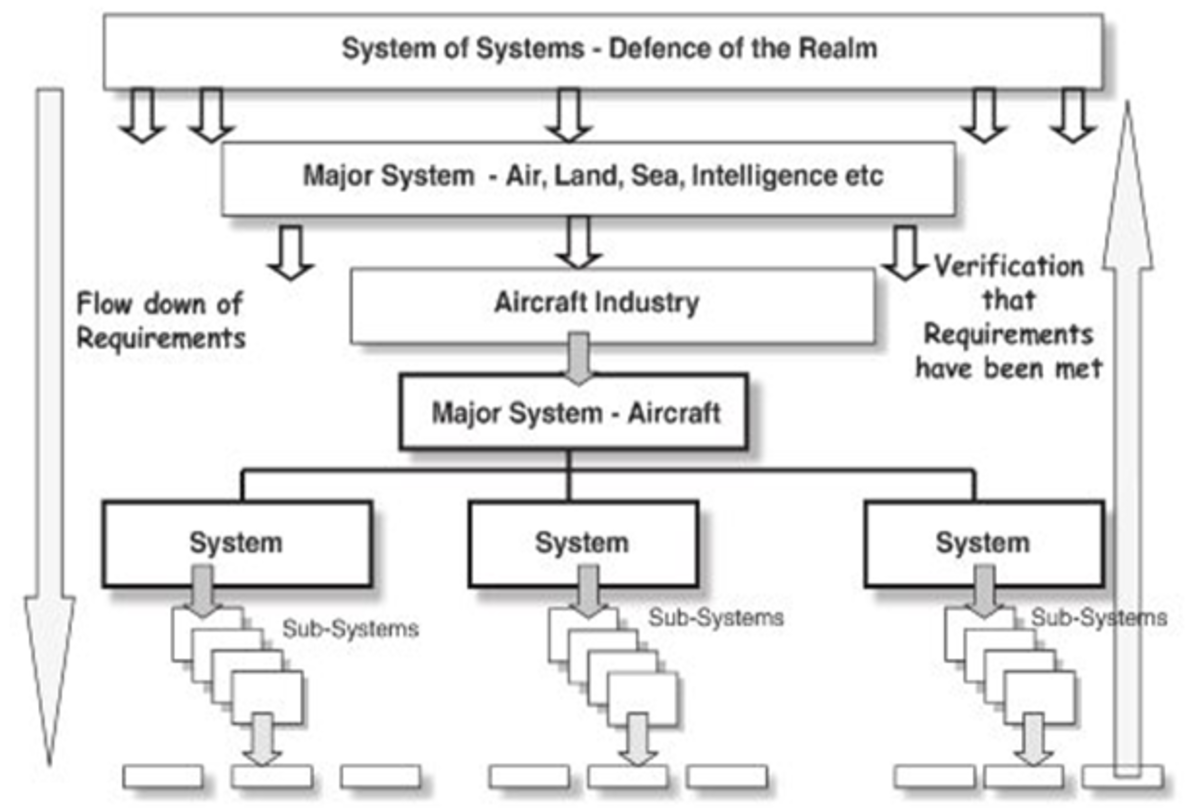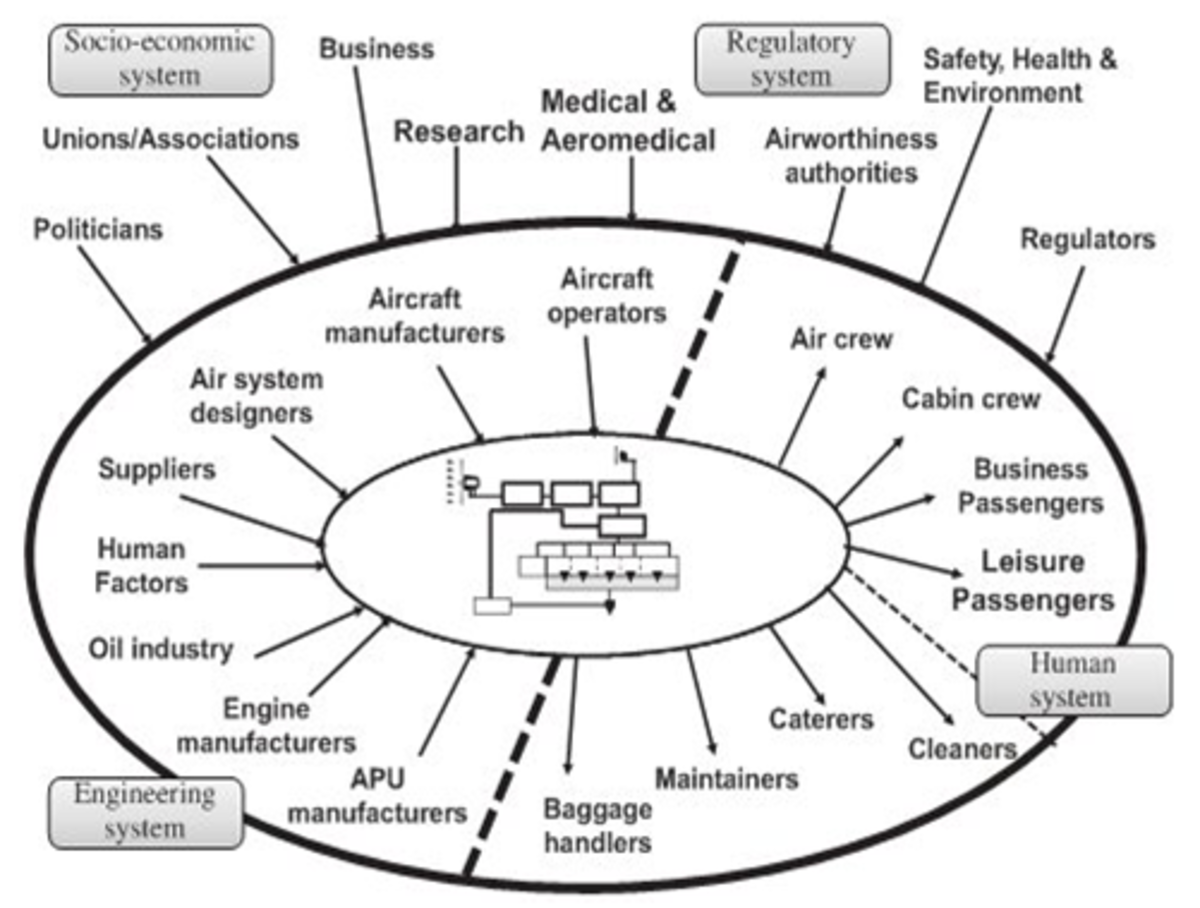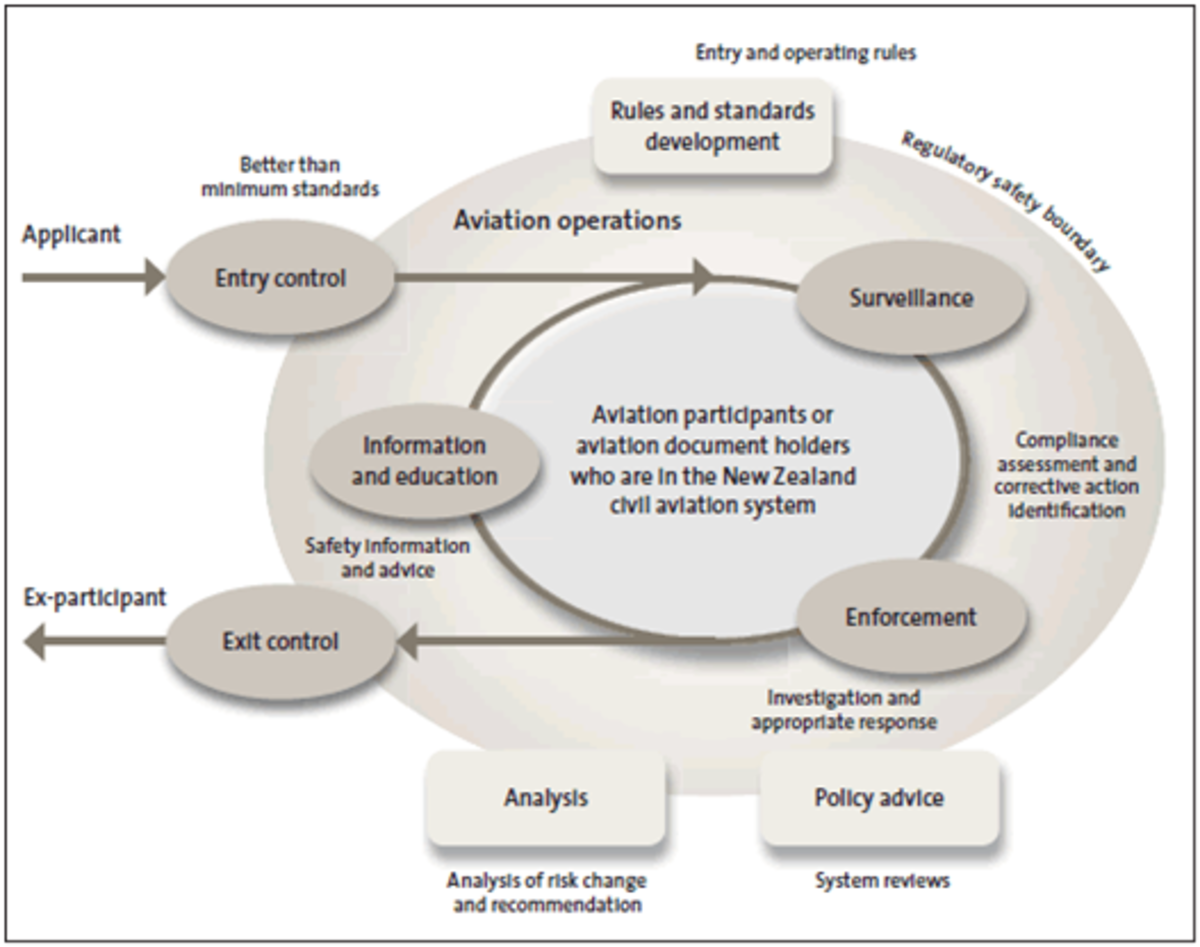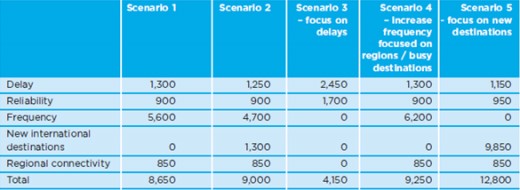Systems engineering is a critical part of any project in the engineering industry; whether it’s manufacturing one simple component or designing a complex product such as a car or aircraft. Well-established organisations such as NASA and BAE Systems stress the importance of systems engineering in order to meet requirements and succeed in missions and projects. But what is systems engineering exactly, and what role does it play in the Aerospace industry?
In order to answer this question, consider what a system is. According to MIL-HBK-338B Electronic Reliability Design Handbook, a system is:
“A composite of equipment and skills and techniques capable of performing or supporting an operational role, or both.” (Department of Defence, 1998)
A system doesn’t necessarily have to be as complex as a vehicle or computer, and it can be part of a larger more complex system. It doesn’t even have to be manmade; the Solar System is a natural example of a system, while the brakes on cars are a system on its own that contributes as part of a larger system. A system is an assembly of components that work together to process an input to create an output.
Systems can be split into a number of smaller systems and subsystems that specialise in different areas to ensure that the overall system conforms to its requirements and specifications. A hierarchy of these systems can be drawn up to split the requirements of the major system into smaller and more manageable components that can be distributed amongst these specialised subsystems.

Figure 1 - Example of a hierarchy of systems. (Moir & Seabridge, 2013)
In order to ensure that all the components will work together in the overall system, a lot of communication and integration between subsystems is required. This is where systems engineering comes in. Systems engineering is described by the International Council on Systems Engineering (INCOSE) as:
“An interdisciplinary approach and means to enable the realization of successful systems. It focuses on defining customer needs and required functionality early in the development cycle, documenting requirements, then proceeding with design synthesis and system validation while considering the complete problem.” (INCOSE)
Systems engineering is “holistic and integrative” and bridges the gap in communication between the different subsystems “to produce a coherent whole” (NASA, 2009). Whereas subsystems are specialised and focus on one area of the major system, systems engineering is more generalised and takes a more goal-centred approach, looking at the bigger picture to ensure that the subsystems come together effectively to produce the final major system within a deadline and budget.
Systems Engineering in Aerospace
Organisations in sectors such as automotive and aerospace find systems engineering especially useful to identify alternative solutions, prevent any unforeseen problems, and ensure the customer is satisfied with the quality of the finished product. Furthermore, INCOSE state that “effective use of systems engineering can save over 20% of the project budget” (INCOSE, 2009). Systems engineering software now allows companies to test concept models against the customer requirements through virtual simulations, and produce documented safety evidences for assessments from certification bodies such as the Civil Aviation Authority (CAA) (3dsCATIA, 2011). This helps reduce waste in materials from testing prototypes, modifications and possible scrapping, and makes the process from concept to product much faster and more efficiently.
A systems engineer’s aim is to help the customer to properly understand the problem at hand and prepare solutions to the problem for the customer to select from. The systems engineer can then lead and guide the different departments of the project team towards the goal of implementing this solution, by starting with the desired output to determine the required inputs and then constantly referring back to the customer requirements to ensure the final system conforms to its specifications. To this a systems engineer needs to have a number of different skills and traits including:
- A broad technical competence - systems engineers require a fundamental understanding of most, if not all, of the different subsystems, and a desire to learn more about these areas;
- An appreciation of the value of process and overall objectives that need to be met to reach the end goal, and the ability to address these objectives to the subsystem teams;
- A self confident leader, but also a strong and assertive team member - Harold Bell from NASA Headquarters suggests that "a great systems engineer completely understands and applies the art of leadership and has the experience and scar tissue from trying to earn the badge of leader from his or her team" (NASA, 2009);
- Problem solving and critical thinking skills;
- Exceptional communication and active listening skills and the ability to make system-wide connections;
- The ability to take a goal-centred approach as opposed to a technical or chronological insight - a systems engineer looks at the output to determine the required inputs for a project and needs to be able to see the bigger picture, only focusing on the smaller details when needed;
- Comfortable with change and uncertainty - according to NASA, systems engineers need to understand and encourage quantification of uncertainty in teams in order to design a system which accommodates these uncertainties (NASA, 2009);
- Creativity and engineering instinct in order to find the best way to solve a problem while appreciating the risks and implications;
- Proper paranoia - expecting the best, but thinking about and planning for the worst case scenario as a precaution.
A few of the behavioural characteristics of a systems engineer can be summarised into one attribute: systems thinking. Systems thinking was first founded in 1956 by MIT professor Jay Forrester, who recognised the need for better methods of testing new ideas about social systems, in a similar way that ideas in engineering can be tested (Aronson). Systems thinking is a set of general principles that enables people to understand and manage social systems and improve them.
The systems thinking approach is fundamentally different to traditional forms analysis. For one thing traditional analysis focuses on reductionism - reducing parts of the major system (also referred to as holons) to ever decreasing components (Kasser & Mackley, 2008). In contrast, systems thinking looks at the bigger picture and how the system or part interacts with the other holons, and recognises loops and relationships between the holons. This can often result in markedly different conclusions to those generated from using traditional analytical methods, but it can also help in determining the emergent behaviours of holons and the possibility of unwanted outcomes - expecting the unexpected. By taking these steps it becomes easier to identify new and more effective solutions to complex and recurring problems, while also improving coordination within the organisation.
In industry, systems engineers are required to work with a number of different stakeholders, each with their own perspective for the design and development of the product required. For example, if an aerospace organisation were to look into the concept development of a new civil aircraft, there would be a wide range of stakeholders in question, including suppliers of materials and services, passengers and air crew, and certification authorities, as well as the engineering team directly involved with the project. Figure 2 shows the typical stakeholders in a civil aviation system, splitting them into four main system interfaces: socio-economic, regulatory, engineering, and human. By identifying these interfaces, systems engineers are able to plan when interactions with particular systems are required and simplify development and operations, documenting the process throughout.

Figure 2 - Typical stakeholders in a civil aviation system. (Moir & Seabridge, 2013)
Each stakeholder is interdependent with others in the same interface. For example, when applying for a type certificate a number of prototypes have to be produced to undergo different tests and a maintenance program has to be put together to support continuous airworthiness after approval of the design. This is submitted along with the test results of the prototype to the regulators who – if satisfied with the safety, health and environment aspects of the prototype – approve the prototype and the airworthiness authority grants a type certificate (MAWA, 2014). Further regulations then have to be conformed to in order for the aircraft to keep its type certificate and Certificate of Airworthiness or it will be deemed unsafe to fly. Systems engineers therefore have to understand the regulations the aircraft has to conform to throughout its life and plan methods to maintain it at an airworthy standard.
A systems engineer's job does not finish once the concept has become a product. They then have to work with a maintenance team to keep the product safe and able to use until it retires from service. Figure 3 shows the life cycle of an aircraft from the point of view of the Civil Aviation Authority (CAA) and the way in which systems engineers and product managers in aeronautical would have to work with the CAA throughout the life cycle.

Figure 3 - Life cycle of an aircraft (The Civil Aviation Authority of New Zealand, 2009)
Conclusion
Systems engineering is "a crucial core competency" for success in the aerospace industry. It is first and foremost about managing complexity to get the right design, and then maintaining and enhancing its technical integrity (NASA, 2009). According to NASA administrator Michael D. Griffin in his 2007 presentation, Systems Engineering and the 'Two Cultures' of Engineering, systems engineering helps to provide a balance of all the subsystems to combine into a system that will proceed past the preliminary design phase and thus accomplish the customer requirements it was explicitly designed for (Griffin, 2007).
By looking into the concept development of a civil aircraft and considering the different stakeholders and system interfaces involved in the lifecycle of the aircraft, whether directly or indirectly, it is evident that systems engineers have a extensive array of responsibilities and perspectives to manage outside of the engineering system that continue to be addressed and managed even after the preliminary design phase has been completed. By ensuring that they fully understand the extent of the end goal of the final product, and appreciation the impact it will have on the different stakeholders, systems engineers are able to determine the inputs required to reach these targets within the deadlines and budgets situated.
Although systems engineering may take different forms depending on the industry and the preferences of the organisation, the underlying methods utilized remain consistent and the aim remains the same: to find the best design to meet the requirements. In any engineering project there will be a number of specialised subsystems that need to be brought together to ensure that the end result of the project fulfils its specifications to the best of its ability.
References
3dsCATIA. (2011, September 30). What is "Systems Engineering"? | Elementary collection. Retrieved from YouTube: https://www.youtube.com/watch?v=Eap9kmIz_6k
Aronson, D. (n.d.). Overview of Systems Thinking. Retrieved 2016, from Thinking Page: http://www.thinking.net/Systems_Thinking/OverviewSTarticle.pdf
Department of Defence. (1998). MIL-HBK-338B Electronic Reliability Design Handbook. Virginia: Defense Quality and Standardization Office.
INCOSE. (n.d.). What is Systems Engineering? Retrieved 2016, from INCOSE UK: http://www.incose.org/AboutSE/WhatIsSE
INCOSE. (2009, March). zGuide 3: Why invest in Systems Engineering? Retrieved from INCOSE UK: http://www.incoseonline.org.uk/Program_Files/Publications/zGuides_3.aspx?CatID=Publications
Kasser, J., & Mackley, T. (2008). Applying systems thinking and aligning it to systems engineering. Cranfield: Joseph E. Kasser.
Moir, I., & Seabridge, A. (2013). Design and Development of Aircraft Systems (2nd ed). Chichester: John Wiley & Sons Ltd.
NASA. (2009). The Art and Science of Systems Engineering. NASA.
